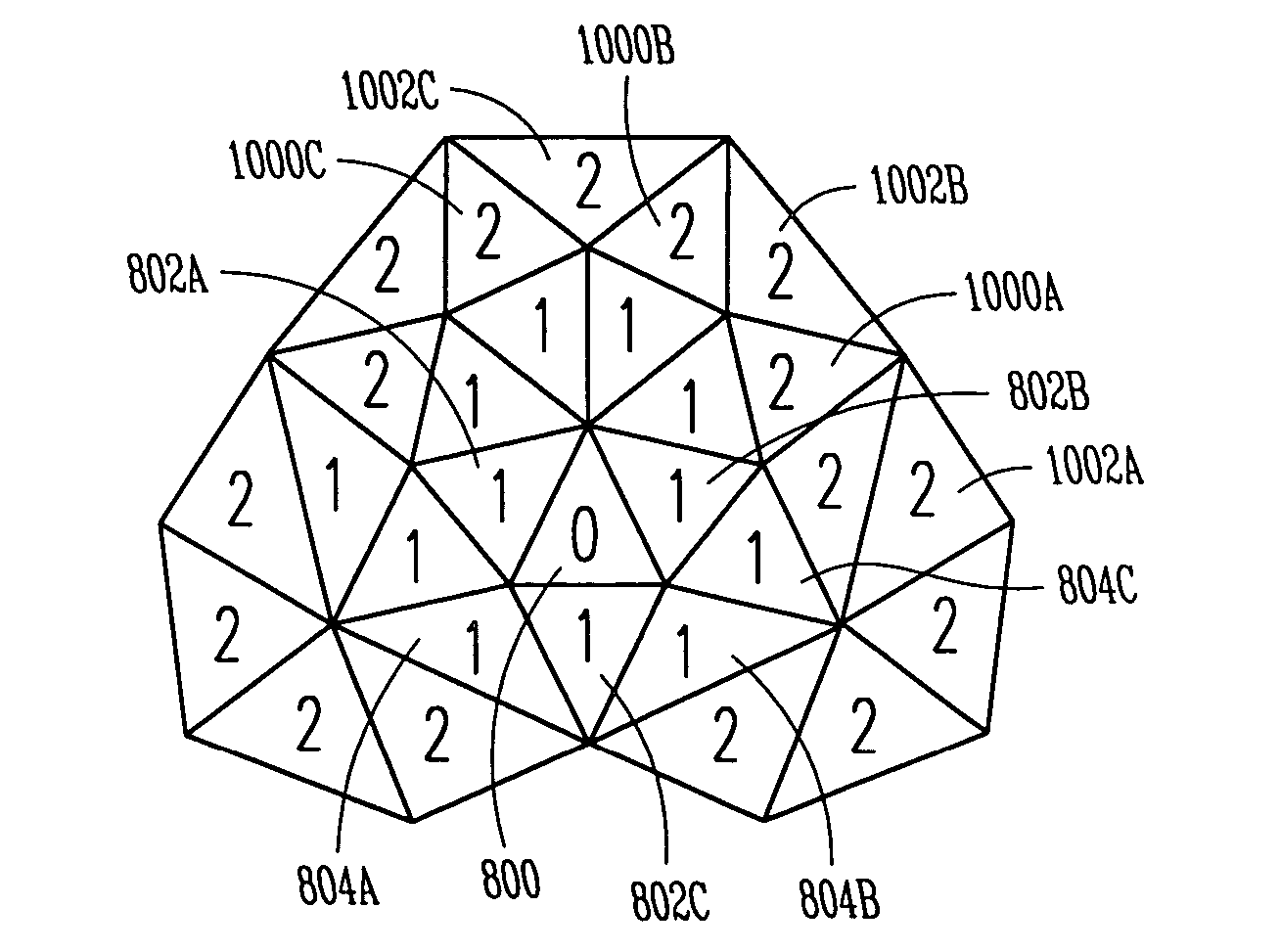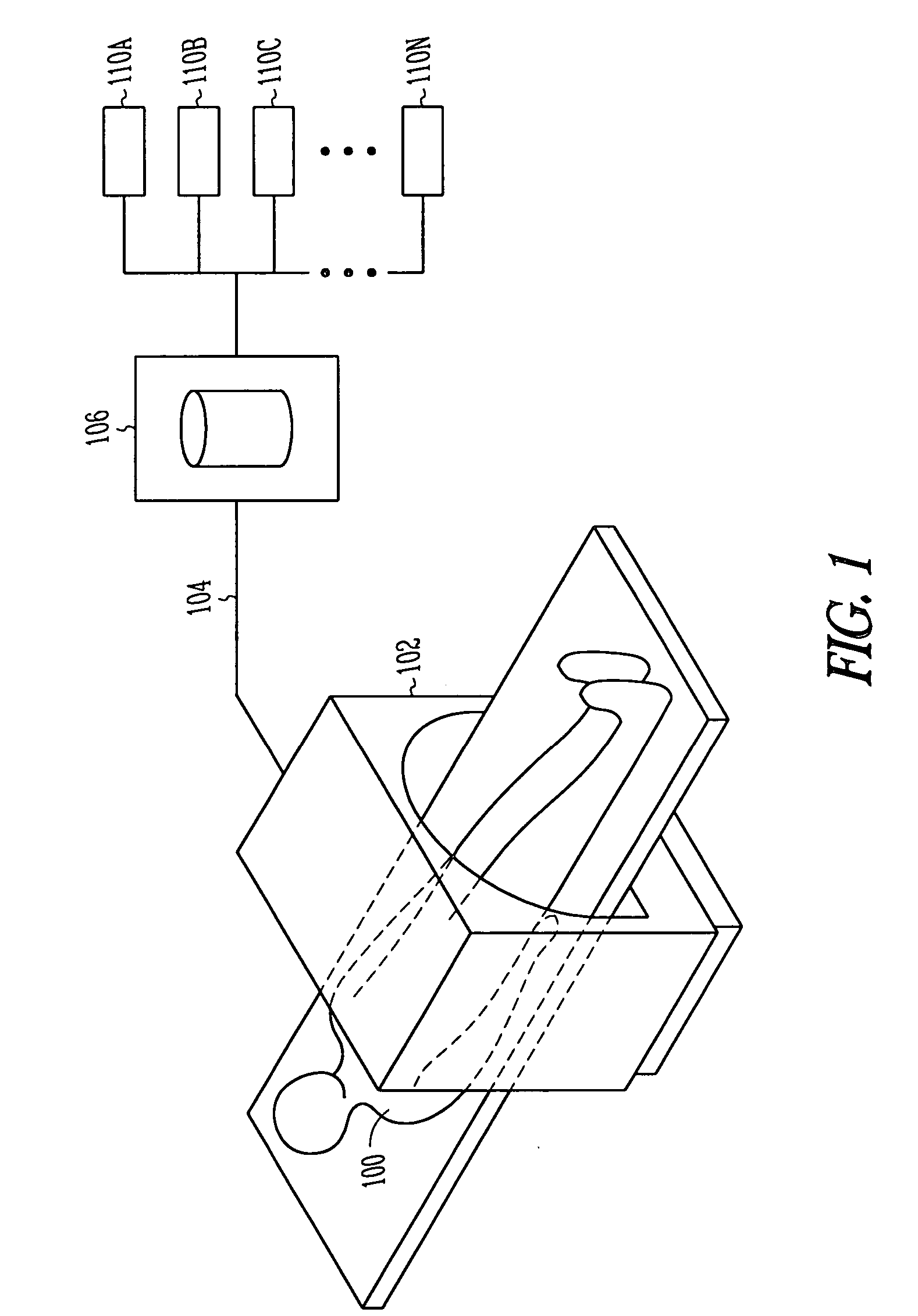Surface-based characteristic path generation
a surface-based, characteristic path technology, applied in image analysis, image enhancement, instruments, etc., can solve the problems of inability to achieve the effect of increasing computational costs, affecting the accuracy of the characteristic path generation, and affecting the accuracy of the characteristic path
- Summary
- Abstract
- Description
- Claims
- Application Information
AI Technical Summary
Problems solved by technology
Method used
Image
Examples
examples
[0032]FIG. 4 illustrates portions of a system 110 that is capable of efficient characteristic path generation using a defined 3D surface mesh of a scanned 3D volumetric representation of a biological structure. In this example, a processor 400 is connected to interact with a memory 402. A wide array of possible processor and memory combinations are available. Processors 400 may include commercial units (e.g., Pentium, Motorola 68000 series, PowerPC) or specialized units made for use in specific applications. The memory 402 can include any memory, such as solid-state, magnetic, or optical media.
[0033] A user-interface 408 is typically connected to the processor-memory combination 406. This user-interface 408 typically includes an input device 410 and an output device 412. The input device 410 can be one or more of a keyboard, a mouse, a touchpad, a microphone, a sensing device, a monitoring device, or any other type of device that allows a computer to receive commands or input data ...
PUM
 Login to View More
Login to View More Abstract
Description
Claims
Application Information
 Login to View More
Login to View More - R&D
- Intellectual Property
- Life Sciences
- Materials
- Tech Scout
- Unparalleled Data Quality
- Higher Quality Content
- 60% Fewer Hallucinations
Browse by: Latest US Patents, China's latest patents, Technical Efficacy Thesaurus, Application Domain, Technology Topic, Popular Technical Reports.
© 2025 PatSnap. All rights reserved.Legal|Privacy policy|Modern Slavery Act Transparency Statement|Sitemap|About US| Contact US: help@patsnap.com



